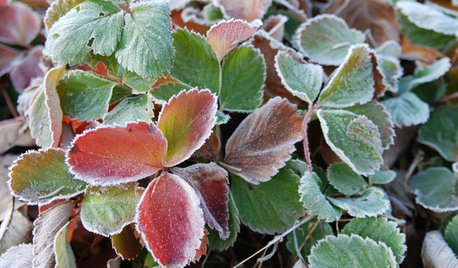How do I stabilize a possible hybrid?
Hi,
I am in New Zealand where heirloom seeds are relatively hard to come by. Often the only option I have is to buy them from Trademe. New Zealand's version of ebay. Often these seeds come from obviously small operations with handwritten labels, etc.
I recently bought and grew a few Aunt Ruby's German Green plants. One grew up to be a an Aunt Ruby's German Green as expected. The other grew up looking identical for a while, with giant large green leaves and a sprawling vine. With 15 varieties in my garden these two appeared identical compared to everything else. That is until the fruit set. One of the plants produced trusses of dark red tomatoes with green shoulders, the largest of which were about twice the size of a golf ball.
I am assuming that this is the result of a hybrid from a grower who was not very careful with separating her varieties, but it's impossible for me to know. The thing is these might be the best tomatoes I've ever tasted. Extremely sweet but with a nice touch of acid. The best in my garden so far, even compared to my Black Krims and Pink Brandywines.
In the event that this is a hybrid, I'm wondering what I can do to possibly stabilize it and be able to reproduce it next year. My only understanding is that if you plant the seeds of a hybrid the resulting plant will be totally different. More like one of the parents.
Anything that can be done other than just plant the seeds and hope for the best?
I've attached a photo in case it's not a hybrid and someone recognizes it. Anyone ever experience the same kind of thing? It would be a shame to see such a great fruit disappear for good.

Comments (31)
lee_71
11 years agoIf it indeed is a hybrid and not mixed seed, your saved seed
is now an F2 generation.
Grow as many of these next year as you can and select the fruit/plant that most resembles this one. Save seed from that plant. (Now you've got F3 generation seed.)
Repeat for the next 4~5 years until you have consistent plants from seed. Probably F7 or F8 generation or so.If it's mixed seed, then most likely it's already stable and you've got your own mystery tomato!
Good luck,
Lee
Microphobik
Original Author11 years agoThanks so much for your help. Is getting an F2 hybrid that is pretty close to it's F1 parent quite difficult? Just wondering if this would be a total crap shoot, or something I could likely pull off.
With that said, if that picture looks at all like any variety someone might recognize please let me know.
Thanks again, that was very informative and explained well.
Related Professionals
Ashland Landscape Architects & Landscape Designers · Ferndale Landscape Architects & Landscape Designers · Redondo Beach Landscape Architects & Landscape Designers · Maple Valley Landscape Contractors · Brownsville Landscape Contractors · Crystal Landscape Contractors · Deerfield Beach Landscape Contractors · Petaluma Landscape Contractors · Chatsworth General Contractors · El Sobrante General Contractors · Marinette General Contractors · Signal Hill General Contractors · Baker Decks, Patios & Outdoor Enclosures · Canton Decks, Patios & Outdoor Enclosures · Huntington Decks, Patios & Outdoor Enclosurescarolyn137
11 years agoAccidental crosses happen all the time for many of us, so we'll assume your NOT ARGG is a hybrid from accidental cross pollination.
I've dehybridized a couple of them, OTV Brandywine being one, and also a known hybrid, Ramapo F1.
Taste that red one to be sure it's something you like b/c there no sense going ahead if you don't like the taste as I see it. I once had 3 plants out of Cherokee Green for seed production, two of them gave ivory fruits and the tastge was absolutely lousy so I never pursued it.,
Then save seeds from several fruits, now called the F2 seeds.
Put out as many plants as you can from the F2 seeds and look for red fruited plants whose fruits taste good. Save seeds from one of them, now called the F3 seeds and if another plant looks good, save F3 seeds from tha tone as well. If it were me I'd go with just one line since it really does get to be a lot of work as well as space needs if you work with more than one line.
So repeat the above, saving F4 seeds, do it again, if need be and keep repeating until all seeds give rise to the same plants/fruits at which time you can name it if you wish,
Below I've linked to Keith's excellent website which will explain about genetic segregation, which is what's happening as you plant out each season. And he also tells you, on average, how many generations it takes to get a fully OP ( open pollinatged) variety.
It's not going to be called Aunt Ruby's Red, I hope, b'c it's no longer Aunt Ruby, LOL
Where I read and post there are several from New Zeland and they get their seeds sent from some darn good seed sites here in the US and/or trade seeds with others,but I have to admit that I'm not a fan of trading b'c of getting crossed seed although it has worked out for many.
Hope that helps,
Carolyn
Here is a link that might be useful: Keith Muller site
Microphobik
Original Author11 years agoThanks for the info. Also very helpful. I need to find out more about how to get seeds into the country. I'm actually from the US as well but bought a place here in NZ after marrying a Kiwi. We split our time back and forth, but I have taken up growing tomatoes whenever we are here. The agriculture laws are extremely strict here and my understanding was that you had to go through quite a hassle to legally import seed. But maybe I'm wrong. I'll have to try and connect with someone from NZ here and see if I can get any tips.
Thanks again.
carolyn137
11 years agoLee, I didn't mean to repeat what you said but here's what happened. I was the first to answer, was in the middle of answering when the person who comes on Wednesdays to take out the trash and do some cleaning in the house came, and we had to sort through some papers, etc.
So when she left the message was still on the desk top and I finished it and then posted it.
OK, the question is will there be any plants from sown F2 seeds that are exactly like the initial plant/fruits.
Probably not, but it depends on how many plants you put out as well as what the other parent of the cross might have been, we know that ARGG was the maternal parent.
For the OTV Babndywine, for instance, I put out 12 plants from F2 seeds and one looked like the original accidental hybrid, but saved seeds from that F2 one, now the F3 seeds gave me several other kinds of plants and fruits, as well as the one that looked like the original hybrid.
Same thing with the plants from the now saved F4 seeds, as in not all the plants looked like the original, which means that genetic segregation was still at work.
it took me out to the F5 or F6, I can't remember which, before ALL the plants were identical, thus a stable OP.
I hope you get a chance to read Keith's articles and cartoons about genetic segregation, And that site also has lots of other great info and links as well.
So the decisions you have to make is if what you have now as a hybrid is good enough to pursue it to an OP and do you have enough room to do so, and how many years are you willing to put into it?
Lots of decisons to make,
Carolyn
John A
11 years agoSome hybrids will reproduce true and some won't. I am now up to F9 with my Brandy Boys. Each year I plant an original F1 for comparison, and each year they are exactly the same. I don't plant them directly next to each other, but unfortunately, mine would not be considered dehybridized because I don't meet the requirements for segregation and my sample size isn't large enough.
John Amule
11 years agoJohn,
sample size won't matter. Even with just choosing one seedling (or seed) it is still segregating each generation. The only exception is if it outcrossed with some other variety's pollen. The odds are in your favor of that not happening.
ABlindHog
11 years agoHi
I'm new, both to this forum and to this subject. Please forgive my ignorance, but I would like to learn more about the genetic manipulation of tomatoes. Might it be useful to maintain the F1 by rooting cuttings so as to have a baseline available for comparison and perhaps to back cross to at some point?Microphobik
Original Author11 years agoABlindHog,
I certainly am not the expert on this but thanks for the suggestion. I can't believe I didn't think of it. I was a bit worried of losing it forever so I will definitely take a few cuttings and try and overwinter them, assuming no one else has any reasons why that wouldn't be a good idea. It's fairly tropical where we are and frosts are rare. Rain and fungus is more of the worry. So I'll bring a few inside to keep them alive, both as a control and a just-in-case.
Does that picture like a variety anyone might recognize? I tried contacting the seller but had no response.
eahamel
11 years agoMicro, keeping your plant alive with cuttings is a good idea. Actually, tomatoes are tender perennials, not annuals, so if your winters are mild, it may stay alive until the next growing season. And you can make cuttings, too. I've done a short growout myself - I saved seeds from a Husky Gold and planted them the next year. I got several plants - a couple were spindly and never even bloomed. A couple made unpleasant tasting tomatoes. One made a tall plant with a gold tomato that I called "Not So Husky Gold", and it tasted really good. I have the seeds still and need to plant them again and see what happens.
ABlindHog
11 years agojohn11840
I would like to ask a few questions regarding your April 4 post on this thread if I may.From your post:
" I am now up to F9 with my Brandy Boys.unfortunately, mine would not be considered dehybridized because I don't meet the requirements for segregation"Is dehybridization something You hope to attain in this project?
Can you please explain what you mean by the requirements for segregation?
Would you consider your Brandy Boys to be a stabilized hybrid that is now a separate open pollinated strain?
Hope you don't mind being patient with a newb.
Mike(Edited for clarity)
This post was edited by ABlindHog on Fri, Apr 12, 13 at 14:41
carolyn137
11 years agoMike, on April 3 I gave a link to Keith Mueller's excellent site which explains in detai lhow many generations it takes to hopefully, and Isa yhopefully get an OP version of anF1 hybrid,or for that matter dehybridizingany accidental pollinations that led to a hybrid.
It's all tied up with what's called genetic segregation and at his site he has a wonderful cartoon wayof illustrting that.
Keith's user name here is Mule and he's the one who has been giving you advice,
So please go back to my link and I know that All your questions will be answered.And if not you can ask again here in this thread.
Carolyn
ABlindHog
11 years agoCarolyn
Thank you for the link, I'm sure it will be very helpful. I believe that I may have been unclear in my last post, and I have edited it slightly for clarity. I was hoping to get John's thoughts about his Brandy Boy project. Sorry for the confusion.
Mikecapsicummaximum
11 years ago@ Carolyn137, you don't happen to be Dr. Carolyn J Male by any chance do you?
nialialea
11 years agoStumbled over this variety yesterday. Hard to tell, but maybe? I'm obsessed with the really dark mahogany reds for some reason.
Here is a link that might be useful: Chocolate Stripes
carolyn137
11 years ago@ Carolyn137, you don't happen to be Dr. Carolyn J Male by any chance do you?
$$$$$
Actually yes I am but ever since I've participated at various various message sites since the early 80's and been a
Mod at several message sites I've always signed off as Carolyn and you would have seen my background if you'd looked at My Page, or whatever it's called.There's a big difference between what I was called in my professional life and my obsession with growing everything under the sun,especially tomatoes, in my non-professional life.(smile)
But I had to retire in 1999, and really should change that so called autobiography that I wrote here so many years ago.
So just call me Carolyn. LOL
Carolyn
John A
11 years agoMike - Sorry I haven't responded earlier. I've been busy potting up both peppers & tomatoes.
Carolyn - Thanks for bailing me out on the segregation question. The link you referenced is one of the easiest to understand that I've seen. There's nothing I can do to improve on that.
Mike - My Brandy Boys would not be considered dehybridized by the industry because I don't bag the blossoms. Therefore, it is possible for them to pollinate with another variety planted close to them. For my own use, though, they are stabilized and I have enjoyed the project.
I am also up to F5 with Big Mamas. They also are very close to the F1s.
John A
Microphobik
Original Author11 years ago@nialialea - Thanks for the suggestion. Mine are a much smaller truss tomato and they don't have as pronounced of a stripy pattern like the chocolate stripes or a zebra. I've looked through the seed catalogs I can find here in New Zealand and am not seeing anything that fits the bill, but it's sort of hard to tell from the many small pictures. If the pic above happens to look like an particular variety to anyone else, please let me know. Thanks again for all the info everyone.
capsicummaximum
11 years ago@ Carolyn137, Sorry Carolyn, I looked at your garden web bio, and it didn't identify you as such. But it was extremely similar to the bio in the back of your book (best 35 dollars I've ever spent). I've been googling dehybridizing tomatoes for the past couple days and your garden web posts tend to pop up a lot. I just wanted to find out if you were one and the same. I'm a huge fan of your book.
ABlindHog
11 years agoJohn - Thank you for making time during this busy season to help me out. The only genetic experience I have comes from breeding chickens, As a hobbyist I never considered having an industry standard of "requirements" for segregation to comply with. Though I suppose they must exist for chickens as well. I have always thought of a project as far along yours as well established, the possible emergence of a hidden recessive, or of someone jumping a fence (it's tough to bag a chicken) notwithstanding,
Carolyn- Thank you too. I found Keith Mueller's site to be illustrative, easy to understand, and a pleasant read.
carolyn137
11 years agoPepperBig, as I see it, LOL. nothing to be sorry about at all.
I should really change that bio page since it was put up at least ten years ago, to reflect where I am now and what I'm doing, or not doing now. ( smile)
Carolyn, left wondering if you grow only pepper varieties that have BIG fruits? ( wink)
Mokinu
9 years agoI realize it's been a year or so since you posted. How are things going with your new tomato variety in the works? Did you plant the seeds?
[EDIT: I didn't read the entire thread before writing everything below. I see my idea has been suggested.]
Anyway, if you're in that situation again, you know what you can do? You don't have to save seeds and breed a new tomato to get the same tomato every year (although that would be nice, still). You can just take cuttings and overwinter them.
Tomatoes will root in water. Some people prefer to root them in dirt (which may be preferable considering the plant wouldn't lose nutrients as much that way), but water works just fine (it takes a couple weeks). If you ever root them outside in dirt, know that full sun will probably kill them before they can grow roots (so be careful about full sun).
Anyway, cuttings will produce the same kind of tomatoes as the parent plant, no matter if the plant is a hybrid, an heirloom, F2, F3, or whatever. So, all you have to worry about is keeping your cuttings alive during the winter. Growing tomatoes indoors is easier than a lot of people would have you believe. Just try it. It might take a little learning through experience.
The only real problems I see with this method are these:
* Your tomato plants might get diseased, and then future cuttings may be diseased, too (depending on the disease). However, if you keep one potted indoors all the time, it might keep it from aphids, whiteflies and other things that can spread disease. Taking cuttings before pests and disease become a problem is important (so don't wait until your tomatoes are about to get frosted).
* It's unconventional to market tomato cuttings (although it's certainly possible).So, what I might recommend doing is rather than only taking cuttings yourself, let other people take cuttings, too, and thus spread them around. Of course, they'll need to know that they actually can take cuttings.
Tomatoes don't need tons of dirt if your goal is simply to keep them alive until spring. A 20 fluid ounce pot (though perhaps not ideal), a good window, and a way to keep the soil from getting too cold is probably more than enough (although the plants may get significantly larger and crawl all over the place). If you want big luscious tomatoes in winter, you might want more dirt, and a grow light. You'll likely still get tomatoes using small amounts of dirt (and without a grow light, if you have a window), but I wouldn't count on them being large.
Anyway, there's one way to preserve your tomato.
This post was edited by Shule on Thu, Nov 20, 14 at 2:51
Microphobik
Original Author9 years agoHi,
Thanks for the info. I tried growing it a second year but the tomatoes seemed quite a bit smaller. Then unfortunately they got hit by NZ Possums so I never got to see how the developed. I may give it another try as I still have seed. But yeah, I may try your idea as well next time in addition so that at the very least I can keep the variety alive. Thanks!
Mokinu
9 years agoI've read that the shape, size and color in F2 tomatoes can be expected to be different than with the parent F1 hybrids. However, you may get at least some of those attributes back in the F3+ tomatoes.
What I recommend, since you still have the seeds, is to grow them, but don't expect anything with the F2 tomatoes (I'm thinking they should be just like the ones your opossums ate). However, save the seeds again, and then plant several seeds from different tomatoes that came off of your F2 plant (make sure they're not all from the same tomato). Then, in the resulting F3 tomato plants, you should get a variety of tomato types, and one of them might be what you're looking for.
That's my guess, anyway. If it doesn't work, maybe try an F4 tomato, but I don't know. Cross-pollinating an F2 with an F3 or vice versa is an option, too, or either with an F4.
I'm not utterly experienced with hybrids, yet. So, do your own research, too, perhaps.
Mokinu
9 years agoI previously made comments about rooting tomatoes in water. I must say, however, that I've learned an easier way.
The main challenge in taking tomato cuttings, whether you root them in water or not, seems to be damping off disease, although the disease doesn't strike until after you plant the tomato in the soil, if you used the water method. To avoid this problem, use fresh (not used) seed-starting mix. Don't use topsoil, even if it's sterilized.
Now, here's the easier way: Use the fresh seed-starting mix. Take a cutting (large cuttings seem to be stronger than short ones, despite how that's not a popular view). Stick it in the soil. Water it, but not crazily. Put it somewhere without really bright light for a couple days (but light is still fine). If it gets too much sun, it can wither and die in a single day. If it's not withering and dying on day one it's not getting too much light.
After being in the soil for 2-4 days the plant will probably wilt. Don't worry. This is normal. When it perks up again (which it should), it probably has roots and is good to go.
I add 7-7-7 fertilizer (Greenview All Purpose Plant Food) and basalt rockdust (from rockdustlocal.com) to my seed starting mix (a couple tablespoons of each for an 8 quart bag of soil), but you probably don't have to do that. I do recommend it, though. I'm using Nature's brand seedling mix (8 quart bags purchased at Bi-Mart; that's also where I got the fertilizer).Seysonn_ 8a-NC/HZ-7
9 years agoI have heard/read that when you get to F9 generation , without any deviation, the you have stabilized your hybrid. From there on you can just observe few more season, then you should be on your way to a new OP.
SeysonnMokinu
9 years agoI don't know a lot about the topic of stabilizing a hybrid, but I know they can get a stabilized hybrid ready for market in 3-4 years. Somehow, I don't think they're getting nine generations through in that time, but maybe it's possible, if they have a way to speed growth and do it all year round. I guess it's possible.
Whatever the case, I think unstabilized tomatoes (peppers, etc.) are largely an unexplored frontier. I mean, with one set of seeds, you could get different kinds of tomatoes every year (and different kinds the same year, even). As long as they're bred to produce a desirable variation every time, that's totally awesome.Rdb Tuinieren
2 years agoU got a F13 and still not stabilized?
Normally u are stable at F7 (depending for how many genes u select)
Do u still have seed from the early generations?

















John A